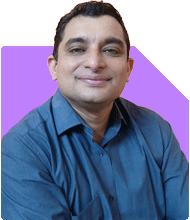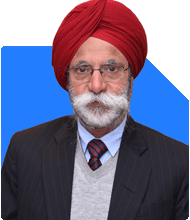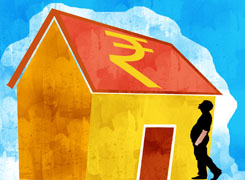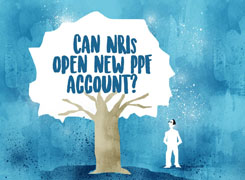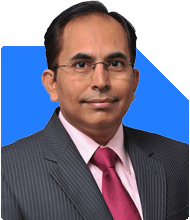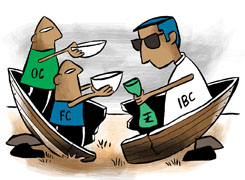35-Year-Old Seeks Retirement Advice: Is My Portfolio on Track?
Ramalingam Kalirajan |10902 Answers |Ask -Follow
Mutual Funds, Financial Planning Expert - Answered on Jul 15, 2024
He has an MBA in finance from the University of Madras and is a certified financial planner.
He is the director and chief financial planner at Holistic Investment, a Chennai-based firm that offers financial planning and wealth management advice.... more

Hi sir, I'm 35 years old I have started with ppf just 4years back which is around 4L change now and have invested in below mutual funds HDFC mutual fund- 1000 pm PPFAS mutual fund - 2500 with step up of 500 every 6 months Aditya Birla Sun Life - 1002 pm Please suggest if I my portfolio needs to be changed and with this can I retire early.
You are on the right track by starting your investments in PPF and mutual funds. Your discipline in contributing regularly is commendable.
The PPF is a secure, long-term investment option. It offers tax benefits and a fixed return. Your current balance of Rs. 4 lakhs in PPF is a good start.
Regarding mutual funds, you have invested in three different schemes. Diversifying your investments is essential, and you have made a good choice by not putting all your money in one fund.
Your current investment approach shows you are cautious and focused on building a secure financial future.
Reviewing Your Mutual Funds
Mutual funds are a great way to build wealth over time. Your choices of funds reflect a good mix, although there is room for improvement.
Regular Contributions
Investing Rs. 1,000 per month in one mutual fund, Rs. 2,500 in another with a step-up of Rs. 500 every six months, and Rs. 1,002 in the third fund shows you are committed to regular investing.
Step-Up Investments
The step-up feature in one of your funds is an excellent strategy. It helps increase your investment amount gradually, which can significantly impact your corpus over the long term.
Evaluating Fund Performance
However, it's essential to evaluate the performance of these funds periodically. Mutual fund performance can vary, and it's crucial to ensure your funds are consistently performing well.
Recommendations for Portfolio Improvement
Your current portfolio is a solid foundation, but there are a few adjustments you can make for better results.
Increase Diversification
Consider adding a few more funds to your portfolio. Diversifying across various types of funds can help balance risk and returns.
Focus on Actively Managed Funds
Actively managed funds, where a fund manager makes decisions on the portfolio, can offer better returns than index funds. While index funds track the market, actively managed funds aim to outperform it.
Regular Funds over Direct Funds
Although direct funds have lower expense ratios, regular funds offer the benefit of professional advice from a Mutual Fund Distributor (MFD) with a Certified Financial Planner (CFP) credential. This advice can be invaluable, especially in volatile markets.
Review and Rebalance
Regularly reviewing your portfolio and rebalancing it to maintain your desired asset allocation is essential. This ensures your portfolio remains aligned with your financial goals.
Planning for Early Retirement
Early retirement is an achievable goal with disciplined saving and smart investing. Here are some strategies to help you reach this goal.
Increase SIP Amounts
As your income grows, consider increasing your SIP amounts. This can significantly accelerate your wealth-building process.
Utilize Step-Up SIPs
Step-up SIPs, like the one you already have, are beneficial. They allow you to increase your investment amount periodically, which can help grow your corpus faster.
Explore Different Fund Categories
Apart from the funds you already have, explore different categories such as large-cap, mid-cap, small-cap, and sectoral funds. Each category has its risk and return profile, which can add diversity to your portfolio.
Maintain an Emergency Fund
Always keep an emergency fund equivalent to at least six months of your expenses. This fund should be in a liquid and safe investment option.
Health Insurance Coverage
Ensure you have adequate health insurance coverage. Medical emergencies can derail your financial plans, so having a robust health insurance plan is crucial.
Tax Planning and Benefits
Tax planning is a crucial aspect of financial planning. Here are some strategies to maximize your tax benefits.
Section 80C Deductions
Investments in PPF, ELSS (Equity-Linked Savings Scheme), and other eligible instruments qualify for deductions under Section 80C of the Income Tax Act. You can claim deductions up to Rs. 1.5 lakhs per year.
Utilize HRA Benefits
If you are a salaried individual, make sure to claim House Rent Allowance (HRA) benefits. This can significantly reduce your taxable income.
Health Insurance Premiums
Premiums paid for health insurance qualify for deductions under Section 80D. This includes premiums for family and parents.
Capital Gains Tax
Understand the tax implications of your mutual fund investments. Long-term capital gains from equity funds are tax-free up to Rs. 1 lakh per year. Gains above this amount are taxed at 10%.
Building a Corpus for Early Retirement
To retire early, you need a substantial corpus. Here are some steps to help you achieve this.
Calculate Your Retirement Corpus
Estimate the amount you need to retire early. Consider your current expenses, inflation, and life expectancy. This will give you a target corpus to aim for.
Increase Your Investments
As mentioned earlier, increasing your investment amounts over time can help you reach your retirement corpus faster.
Avoid Unnecessary Debt
Avoid taking on unnecessary debt. Focus on paying off any existing debts as soon as possible. This will free up more money for investments.
Regular Reviews
Regularly review your financial plan and make adjustments as needed. Financial goals and market conditions can change, so it's important to stay on top of your plan.
Benefits of Professional Guidance
While managing investments on your own is possible, professional guidance can add significant value.
Expertise and Knowledge
Certified Financial Planners have the expertise and knowledge to help you make informed decisions. They can provide personalized advice based on your financial situation and goals.
Emotional Discipline
A CFP can help you maintain emotional discipline during market volatility. It's easy to make impulsive decisions during market downturns, but a CFP can provide a rational perspective.
Comprehensive Planning
A CFP can help you with comprehensive financial planning, including tax planning, retirement planning, and estate planning.
Regular Monitoring
A CFP will regularly monitor your portfolio and suggest necessary adjustments. This ensures your portfolio remains aligned with your goals.
Final Insights
Your journey towards early retirement is on the right path. Your disciplined approach to investing in PPF and mutual funds is commendable.
By making a few adjustments, such as increasing diversification, focusing on actively managed funds, and regularly reviewing your portfolio, you can enhance your returns.
Tax planning and maintaining adequate health insurance coverage are also crucial aspects of your financial plan.
Professional guidance from a Certified Financial Planner can provide significant benefits, helping you make informed decisions and stay disciplined during market fluctuations.
With continued discipline and smart investing, early retirement is an achievable goal. Keep up the good work and stay focused on your financial journey.
Best Regards,
K. Ramalingam, MBA, CFP,
Chief Financial Planner,
www.holisticinvestment.in
You may like to see similar questions and answers below
Omkeshwar Singh | Answer |Ask -Follow
Head, Rank MF - Answered on Aug 03, 2022
Milind Vadjikar | Answer |Ask -Follow
Insurance, Stocks, MF, PF Expert - Answered on Nov 09, 2024
Ramalingam Kalirajan |10902 Answers |Ask -Follow
Mutual Funds, Financial Planning Expert - Answered on Sep 11, 2025
Reetika Sharma |429 Answers |Ask -Follow
Financial Planner, MF and Insurance Expert - Answered on Sep 25, 2025
Ramalingam Kalirajan |10902 Answers |Ask -Follow
Mutual Funds, Financial Planning Expert - Answered on Sep 22, 2025
Anu Krishna |1749 Answers |Ask -Follow
Relationships Expert, Mind Coach - Answered on Dec 17, 2025
Anu Krishna |1749 Answers |Ask -Follow
Relationships Expert, Mind Coach - Answered on Dec 17, 2025
Radheshyam Zanwar |6748 Answers |Ask -Follow
MHT-CET, IIT-JEE, NEET-UG Expert - Answered on Dec 17, 2025
Anu Krishna |1749 Answers |Ask -Follow
Relationships Expert, Mind Coach - Answered on Dec 17, 2025
Dr Shakeeb Ahmed Khan |184 Answers |Ask -Follow
Physiotherapist - Answered on Dec 17, 2025
T S Khurana |538 Answers |Ask -Follow
Tax Expert - Answered on Dec 17, 2025
T S Khurana |538 Answers |Ask -Follow
Tax Expert - Answered on Dec 17, 2025
Janak Patel |72 Answers |Ask -Follow
MF, PF Expert - Answered on Dec 17, 2025
Ramalingam Kalirajan |10902 Answers |Ask -Follow
Mutual Funds, Financial Planning Expert - Answered on Dec 17, 2025
Samraat Jadhav |2511 Answers |Ask -Follow
Stock Market Expert - Answered on Dec 17, 2025










.jpg)











